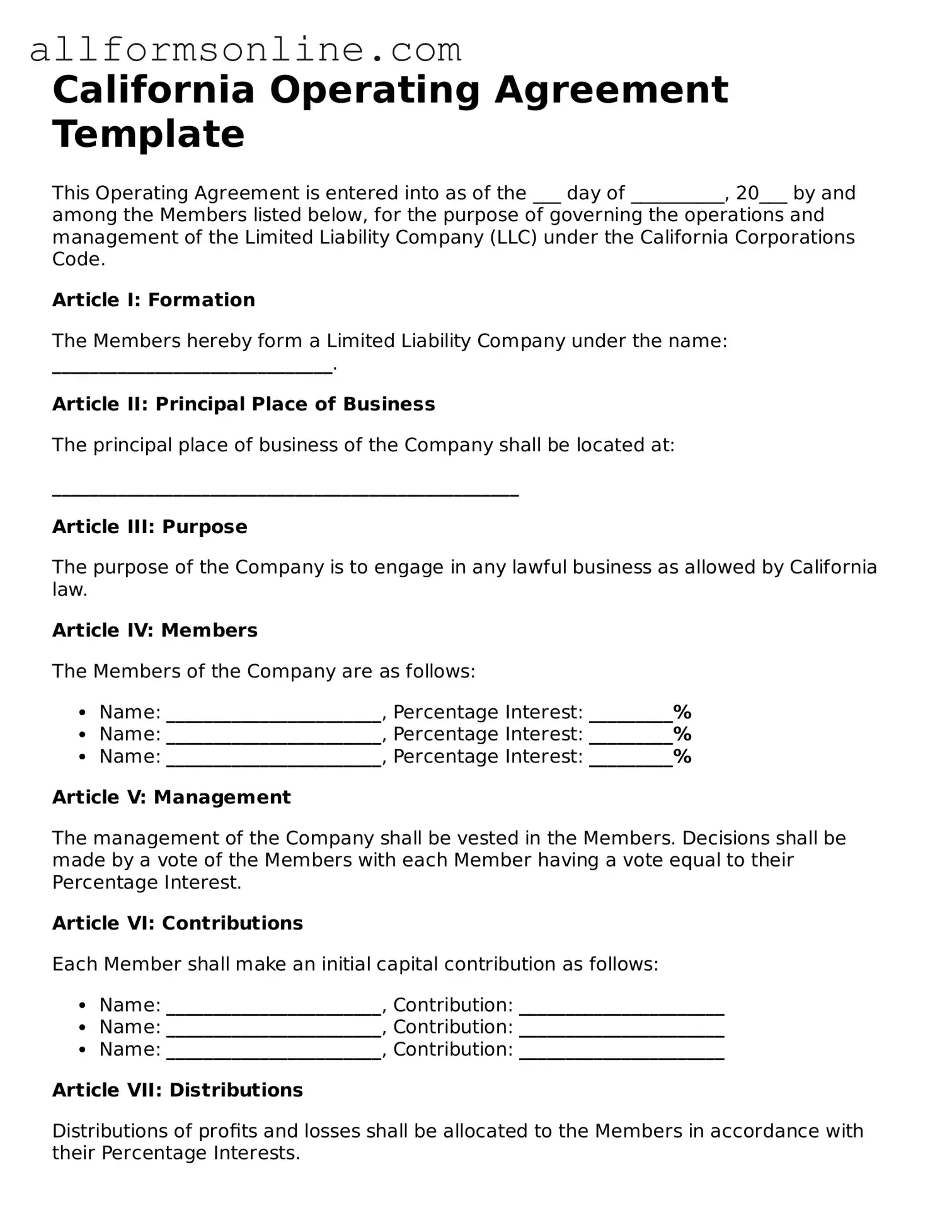What is a California Operating Agreement?
A California Operating Agreement is a crucial document for limited liability companies (LLCs) formed in California. It outlines the management structure, responsibilities of members, and operational procedures of the LLC. While not required by law, having an Operating Agreement helps clarify expectations and can prevent disputes among members. It serves as a guide for how the business will operate and can be vital for maintaining limited liability protection.
Who should create an Operating Agreement?
Every LLC in California, regardless of size or number of members, should have an Operating Agreement. This document is particularly important for multi-member LLCs, as it helps define roles and responsibilities. Even single-member LLCs can benefit from having an Operating Agreement, as it adds a layer of professionalism and can help in maintaining liability protection. It is advisable for all members to participate in the creation of this document to ensure that everyone’s interests are represented.
What should be included in the Operating Agreement?
An effective Operating Agreement typically includes several key components. These include the name and address of the LLC, the purpose of the business, details about member contributions, profit and loss distribution, management structure, and procedures for adding or removing members. Additionally, it should outline how decisions are made and how disputes will be resolved. By addressing these elements, the Operating Agreement can provide a clear framework for the operation of the LLC.
Is the Operating Agreement filed with the state?
No, the Operating Agreement is not filed with the state of California. Instead, it is a private document that is kept on file with the LLC’s records. While it is not submitted to any government agency, it is essential to have it in place. In the event of legal disputes or audits, having this document can help demonstrate how the business is supposed to operate and can protect the members’ interests.
Can the Operating Agreement be changed after it is created?
Yes, the Operating Agreement can be amended after it is created. Changes may be necessary due to shifts in business structure, member roles, or other operational needs. It is important to follow the amendment procedures outlined in the original Operating Agreement. Typically, all members must agree to any changes, and it is advisable to document the amendments in writing. This ensures that everyone is on the same page and helps maintain the integrity of the agreement.
